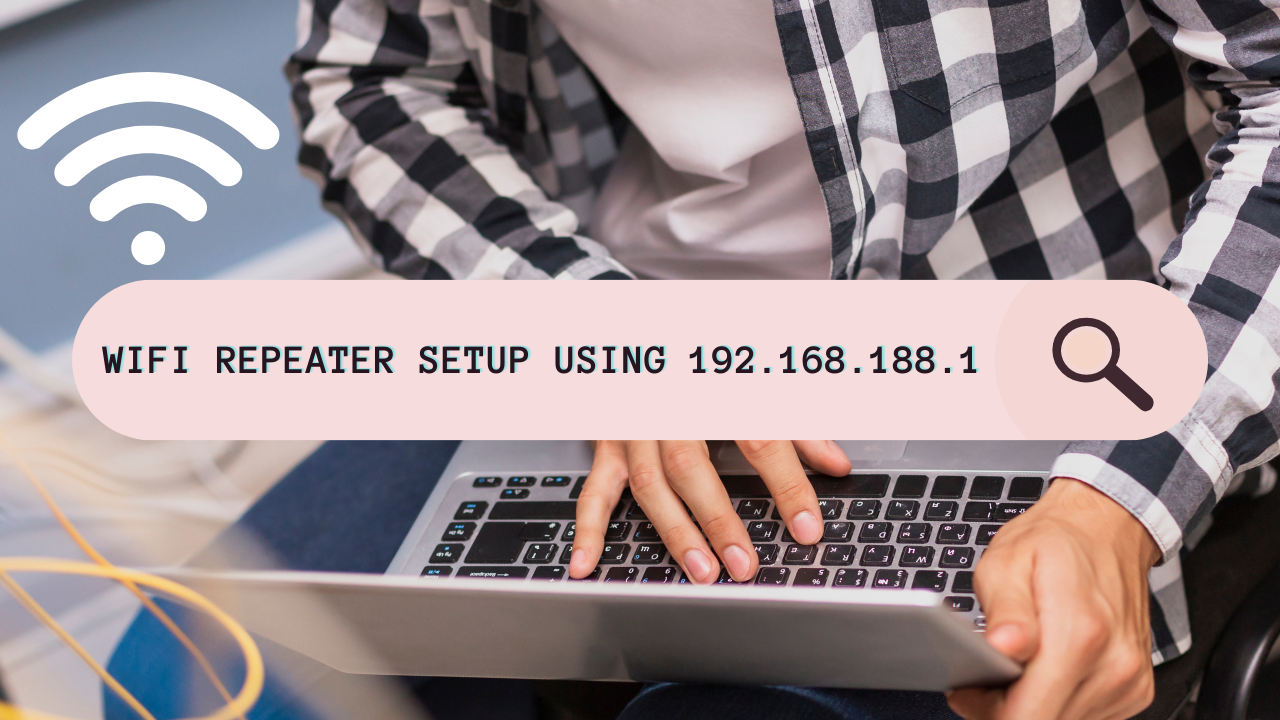In today’s digitally connected world, a strong and stable WiFi signal is crucial for seamless internet access. However, even the most robust wireless routers can struggle to cover every nook and cranny of your home or office. That’s where WiFi repeaters come in. These devices are designed to extend the reach of your WiFi network, eliminating dead spots and ensuring a reliable connection throughout your space. If you’ve need guidance on setting it up WiFi repeater, you’re in the right place. In this article, we’ll walk you through the step-by-step process of WiFi repeater setup using 192.168.188.1.
What Is a WiFi Repeater?
Before we dive into the setup process, let’s take a moment to understand what a WiFi repeater is and how it works. A WiFi repeater, also known as a range extender or signal booster, is a device that amplifies and rebroadcasts your existing WiFi signal. It effectively increases the coverage area of your wireless network, helping you eliminate dead zones and weak signal areas.
Here’s How a WiFi Repeater Works:
- Signal Reception: The repeater first receives the WiFi signal from your primary router. It needs to be placed in an area where it can still receive a strong signal from your router, as it relies on this connection to extend the network.
- Amplification: Once the repeater receives the signal, it amplifies it to improve its strength and quality.
- Signal Broadcast: The repeater then rebroadcasts the amplified signal as a new WiFi network. This network has its own name (SSID) and password, allowing devices to connect to it.
- Seamless Transition: As you move around your home or office, your devices will automatically switch between the primary router’s network and the repeater’s network, ensuring a continuous and uninterrupted connection.
Now, let’s move on to the step-by-step process of setting up a WiFi repeater setup using 192.168.188.1.
Step 1: Unbox and Prepare Your WiFi Repeater
Start by unboxing your WiFi repeater and ensuring that you have all the necessary components:
- The WiFi repeater unit
- A power adapter
- An Ethernet cable (if applicable)
- The user manual (for reference)
Choose an optimal location for your repeater, ideally midway between your primary router and the area where you want to improve WiFi coverage. This location should still receive a strong signal from your router.
Step 2: Plug In and Power On
Connect the WiFi repeater to a power source using the provided power adapter. The device will power on, and you should see indicator lights on the repeater. These lights will help you monitor the device’s status during setup.
Step 3: Connect to the Repeater’s Network
On your computer or mobile device, access the list of available WiFi networks. Look for a network with a name like “WiFi_Repeater” or something similar. This is the default network broadcast by the repeater. Connect to this network.
Step 4: Access the Repeater’s Configuration Page
Once connected to the repeater’s network, open a web browser on your device. In the address bar, enter the default IP address for the repeater: 192.168.188.1 and press Enter. This will take you to the repeater’s configuration page.
Step 5: Log In to the Repeater
You will likely be prompted for a username and password to access the repeater’s settings. By default, many repeaters use “admin” for both the username and password. However, these credentials may vary depending on your device’s manufacturer. Consult the user manual or product documentation for the correct login details.
Step 6: Configure the Repeater
Once logged in, you will have access to the repeater’s configuration interface. Here are the general steps to follow:
- Select Your Existing WiFi Network: Look for a section that allows you to choose your existing WiFi network from a list of available networks. Select your primary router’s network from the list.
- Enter Your WiFi Network Password: You’ll be prompted to enter the password for your primary WiFi network. This is necessary for the repeater to connect to your router.
- Set the Repeater’s Network Name (SSID): Choose a name (SSID) for the new network that the repeater will broadcast. This is the network your devices will connect to when in the repeater’s range.
- Set a Password for the Repeater’s Network: To ensure security, set a password for the repeater’s network. This will prevent unauthorized access to your extended network.
Apply the Settings: After configuring the above options, apply the settings. The repeater will likely restart to apply the changes.
Step 7: Reconnect to Your WiFi Network
Once the repeater has rebooted, your computer or mobile device will disconnect from the repeater’s network. Reconnect to your primary WiFi network, and you should now have extended coverage from the repeater.
Step 8: Test and Optimize
To ensure the repeater is working effectively, move around your home or office and check for a stable WiFi connection in areas that previously had weak or no coverage. If needed, you can adjust the repeater’s location for optimal signal strength.
Conclusion
WiFi repeater setup using 192.168.188.1 can significantly improve your wireless network’s coverage and eliminate dead zones. By following the step-by-step instructions outlined in this guide, you can quickly and easily extend your WiFi signal to enjoy a more reliable and seamless internet experience throughout your space. If you encounter any issues during the setup process, refer to the repeater’s user manual or contact the manufacturer’s support for assistance. With your repeater up and running, you can look forward to a stronger and more expansive WiFi network.




